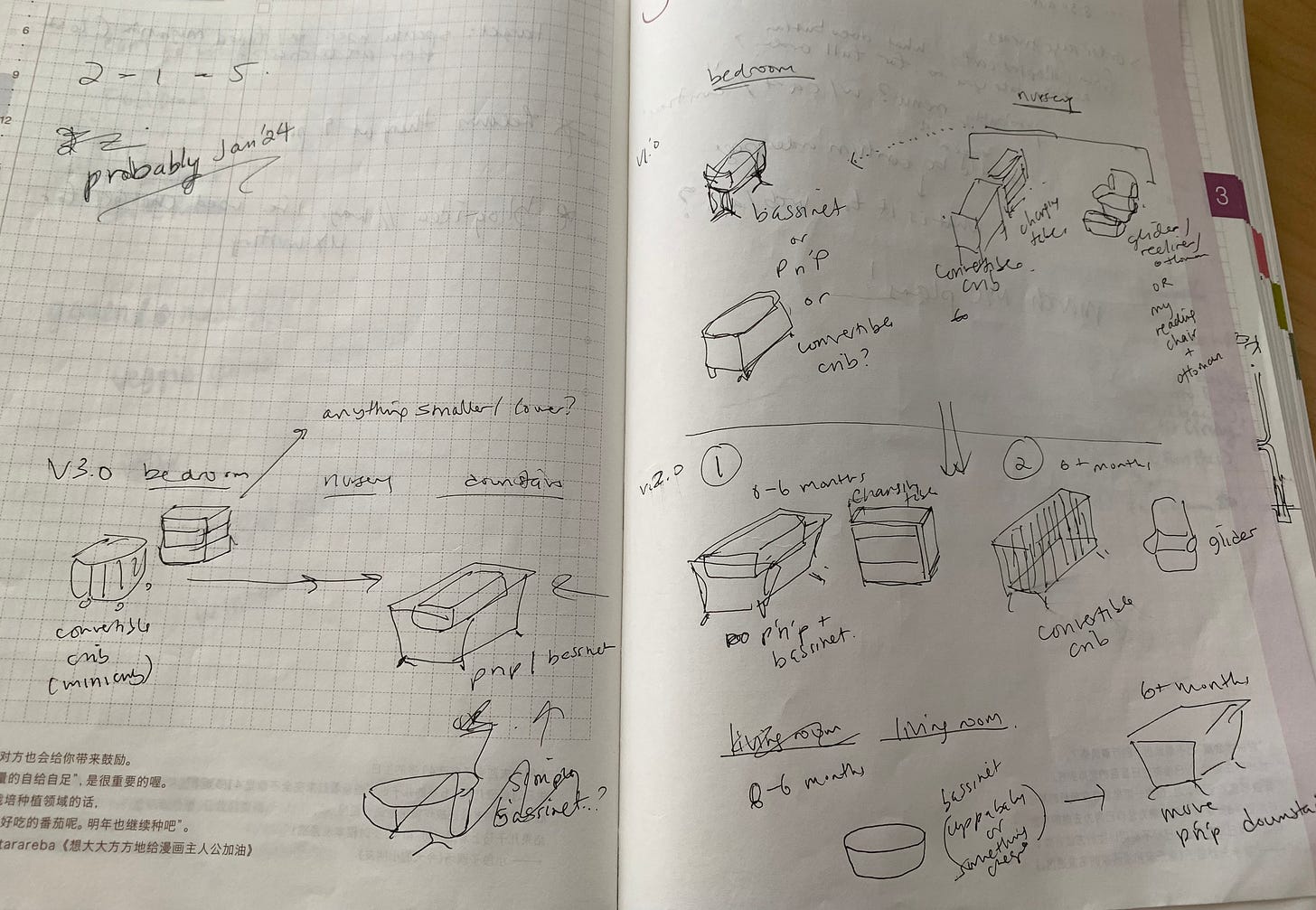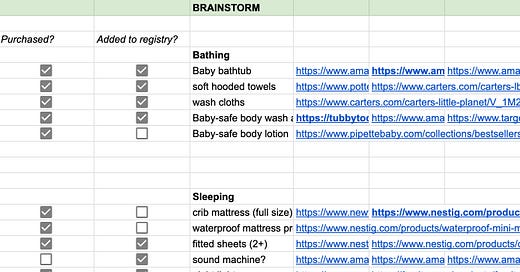Heads-up! With this post, I’m starting a new section of this newsletter for future posts about baby-related shopping. You may not be interested in that — if that’s the case, you can opt out of posts from this section in your Substack settings. :)
I’ve been going through one of the most shopping intensive periods of my life so far — that is, trying to get everything needed to bring home a brand new little person. I started “getting ready” for baby gear shopping at the beginning of my second trimester and immediately came across a broad spectrum of advice.
There were long, detailed lists of product recs for every little thing expectant moms can or cannot (yet) imagine needing. There was often also the reassurance that “babies don’t really need much in the beginning” — just a car seat to go home in, a safe place to sleep, some things to wear, diapers, and maybe bottles to feed with. As a product enthusiast who also wants to stay minimal and “buy only what I need”, you can imagine this has been an exciting but challenging shopping situation to navigate.
As with my general shopping, what has helped me feel like I’m doing it all as intentionally as possible is a system for planning, researching, and tracking my purchases.
This was my order of operations:
1. Get the lay of the land in baby essentials.
Resources that helped:
Lucie’s List registry basics + spreadsheet (last updated in Spring 2022 but still helpful)
Registry checklists from What to Expect, BabyCenter, The Bump
2. Brainstorm my shopping list based on those essential categories in a spreadsheet and start researching/compiling/narrowing down options.
The list is organized by categories (e.g. sleeping, feeding, clothing) but I also have a carve-out section on the side for “essential big items to get first'' because those might take more time to research and would especially benefit from good sale opportunities. For me, those items were the car seat, stroller, sleeping solution of some sort, and dresser/changing table.
As I researched and browsed products, I would put promising product links right in the spreadsheet. But of course, the number and kinds of products I would encounter — via Instagram, TikTok, YouTube, friends’ recs, and so on — went beyond the essentials on the checklist. For those compelling and possibly helpful products that I enjoyed knowing about but don’t need to buy at this stage, I filed them away where it makes sense (e.g. a “Baby” list on Amazon, folders in IG and TikTok, or the “On My Radar” corner of my spreadsheet).
As the months went on, I also added additional shopping-related tabs in my spreadsheet, including an expense tracker just to know how much all this was costing, a hospital bag packing list to identify shopping needs there, and a tab to tally “how many of each do I have in what size” for clothing, diapers, and bottles (I felt the need to do this in order to avoid redundancies, because I was getting freebies from stores, gifts from friends/family, and also buying stuff myself).
3. Build my registry/shopping list with specific items I decided on for each category. Progress!
4. Buy items based on stage of prep and sale opportunities. I generally went in the order of: big-ticket essentials ➡️ smaller essentials ➡️ hospital bag/nursing/postpartum essentials.
My main takeaway from this process is that it’s valuable to have a place to collect ideas freely, separate from the actual registry/shopping list itself — for me, that’s mostly the spreadsheet and Amazon list. This allows me to be aware of different products that can do different things but not necessarily buy them before the baby arrives (or at all). I like knowing that I have options for solving various potential problems and that I can refer back to them later if needed.
I’ll end this post with a personally amusing artifact: some diagram sketches to figure out where baby should sleep — it was a bit of a puzzle sorting through what makes sense based on the space in our home and the many different types of sleeping apparatuses available (think variations on cribs, bassinets, playpens-that-can-also-function-as-sleeping-places). I guess diagramming was another element of my process. It’s all about thinking through the options!

— Jenny






